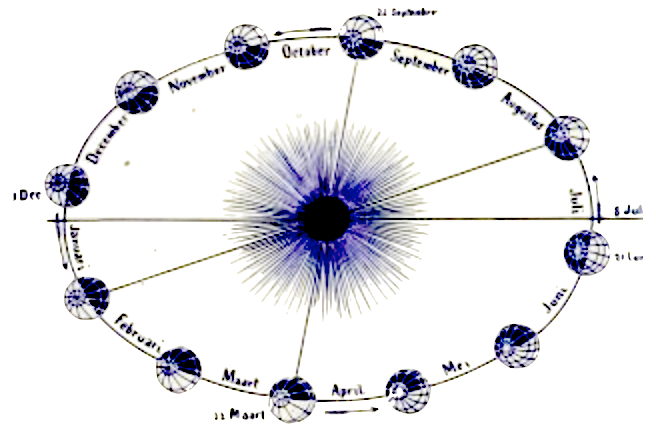Wikipedia on language and codes
q[MvA] Why are Wiki-pages in different languages not literal translations, but instead completely ‘different’ texts?
| Letter | Name[19] | Meaning | Phoneme | Origin | Corresponding letter in | |||||||||
|---|---|---|---|---|---|---|---|---|---|---|---|---|---|---|
| Image | Text | Hebrew | Syriac | Arabic | South Arabian | Ge’ez | Greek | Latin | Cyrillic | |||||
| 𐤀 | ʾālep | ox | ʾ [ʔ] | 𓃾 | א | ܐ | ﺍ | 𐩱 | አ | Αα | Aa | Аа | ||
| 𐤁 | bēt | house | b [b] | 𓉐 | ב | ܒ | ﺏ | 𐩨 | በ | Ββ | Bb | Бб, Вв | ||
| 𐤂 | gīml | throwing stick (or camel[20]) | g [ɡ] | 𓌙 | ג | ܓ | ﺝ | 𐩴 | ገ | Γγ | Cc, Gg | Гг, Ґґ | ||
| 𐤃 | dālet | door (or fish[20]) | d [d] | 𓇯 | ד | ܕ | د, ذ | 𐩵 | ደ | Δδ | Dd | Дд | ||
| 𐤄 | hē | window (or jubilation[20]) | h [h] | 𓀠? | ה | ܗ | ه | 𐩠 | ሀ | Εε | Ee | Ее, Єє, Ээ | ||
| 𐤅 | wāw | hook | w [w] | 𓏲 | ו | ܘ | ﻭ | 𐩥 | ወ | (Ϝϝ), Υυ | Ff, Uu, Vv, Yy, Ww | Ѵѵ, Уу, Ўў | ||
| 𐤆 | zayin | weapon (or manacle[20]) | z [z] | 𓏭 | ז | ܙ | ﺯ | 𐩹 | ዘ | Ζζ | Zz | Зз | ||
| 𐤇 | ḥēt | courtyard/wall (?) | ḥ [ħ] | 𓉗/𓈈? | ח | ܚ | ح, خ | 𐩢, 𐩭 | ሐ, ኀ | Ηη | Hh | Ии, Йй | ||
| 𐤈 | ṭēt | wheel | ṭ [tˤ] | 𓄤? | ט | ܛ | ط, ظ | 𐩷 | ጠ | Θθ | — | Ѳѳ | ||
| 𐤉 | yōd | hand | y [j] | 𓂝 | י | ܝ | ي | 𐩺 | የ | Ιι | Ii, Jj | Іі, Її, Јј | ||
| 𐤊 | kāp | palm of a hand | k [k] | 𓂧 | כך | ܟ | ﻙ | 𐩫 | ከ | Κκ | Kk | Кк | ||
| 𐤋 | lāmed | goad | l [l] | 𓌅 | ל | ܠ | ﻝ | 𐩡 | ለ | Λλ | Ll | Лл | ||
| 𐤌 | mēm | water | m [m] | 𓈖 | מם | ܡ | ﻡ | 𐩣 | መ | Μμ | Mm | Мм | ||
| 𐤍 | nūn | serpent (or fish [20]) | n [n] | 𓆓 | נן | ܢ | ﻥ | 𐩬 | ነ | Νν | Nn | Нн | ||
| 𐤎 | sāmek | pillar(?) | s [s] | 𓊽 | ס | ܣ ܤ | — | 𐩪 | ሰ | Ξξ | Xx | Ѯѯ, | ||
| 𐤏 | ʿayin | eye | ʿ [ʕ] | 𓁹 | ע | ܥ | ع, غ | 𐩲 | ዐ | Οο, Ωω | Oo | Оо | ||
| 𐤐 | pē | mouth (or corner[20]) | p [p] | 𓂋 | פף | ܦ | ف | 𐩰 | ፐ, ፈ | Ππ | Pp | Пп | ||
| 𐤑 | ṣādē | papyrus plant/fish hook? | ṣ [sˤ] | 𓇑 ? | צץ | ܨ | ص, ض | 𐩮 | ጸ, ጰ, ፀ | (Ϻϻ) | — | Цц, Чч, Џџ | ||
| 𐤒 | qōp | needle eye | q [q] | 𓃻? | ק | ܩ | ﻕ | 𐩤 | ቀ | Ϙϙ | Ҁҁ | |||
| 𐤓 | rēš | head | r [r] | 𓁶 | ר | ܪ | ﺭ | 𐩧 | ረ | Ρρ | Rr | Рр | ||
| 𐤔 | šīn | tooth (or sun[20]) | š [ʃ] | 𓌓 | ש | ܫ | ش, س | 𐩦 | ሠ | Σς | Ss | Сс, Шш, Щщ | ||
| 𐤕 | tāw | mark | t [t] | 𓏴 | ת | ܬ | ت, ث | 𐩩 | ተ | Ττ | Tt | Тт | ||
The earliest Aramaic alphabet was based on the Phoenician alphabet. In time, Aramaic developed its distinctive “square” style. The ancient Israelites and other peoples of Canaan adopted this alphabet for writing their own languages. Thus, it is better known as the Hebrew alphabet today. This is the writing system used in Biblical Aramaic and other Jewish writing in Aramaic. The other main writing system used for Aramaic was developed by Christian communities: a cursive form known as the Syriac alphabet. A highly modified form of the Aramaic alphabet, the Mandaic alphabet, is used by the Mandaeans.
In addition to these writing systems, certain derivatives of the Aramaic alphabet were used in ancient times by particular groups: the Nabataean alphabet in Petra and the Palmyrene alphabet in Palmyra. In modern times, Turoyo (see below) has sometimes been written in a Latin script.
Aramaic[2] (Arāmāyā; Old Aramaic: 𐤀𐤓𐤌𐤉𐤀; Imperial Aramaic: 𐡀𐡓𐡌𐡉𐡀; square script אַרָמָיָא, Classical Syriac: ܐܪܡܝܐ) is the language or group of languages of the ancient region of Syria.[3] It belongs to the Northwest Semitic group of the Afroasiatic language family, which also includes the Canaanite languages such as Hebrew, Amorite, Edomite, Moabite and Phoenician, as well as Ugarite. The Aramaic alphabet was widely adopted for other languages and is ancestral to the Hebrew, Syriac and Arabic alphabets. During its approximately 3,100 years of written history,[4] Aramaic has served variously as a language of administration of empires, as a language of divine worship and religious study, and as the spoken tongue of a number of Semitic peoples from the Near East.
source Wikipedia
From Wikipedia
The Phoenician alphabet is an alphabet (more specifically, an abjad)[3] consisting of 22 consonant letters only, leaving vowel sounds implicit, although certain late varieties use matres lectionis for some vowels.
Its immediate predecessor, the Proto-Canaanite alphabet or early “West Semitic alphabet”,[4] used in the final stages of the Late Bronze Age in the Syro-Hittite kingdoms, is the oldest fully matured alphabet, ultimately derived from Egyptian hieroglyphs.[5]
In the Early Iron Age, the Phoenician alphabet was used to write Northwest Semitic languages, more specifically early Phoenician, Moabite, Ammonite, Edomite, Hebrew and Old Aramaic.
Its use in Phoenicia (coastal Levant) led to its wide dissemination outside of the Canaanite sphere, spread by Phoenician merchants across the Mediterranean world, where it was adopted and modified by many other cultures. It became one of the most widely used writing systems.
The Phoenician alphabet proper remained in use in Ancient Carthage until the 2nd century BC, while elsewhere it diversified into numerous national alphabets, including the Aramaic and Samaritan, several Anatolian scripts, and the early Greek alphabets.
In the Near East, the Aramaic alphabet became especially successful, giving rise to the Hebrew and Arabic scripts, among others.
The Greek alphabet in turn gave rise to numerous derived scripts, including Latin, Cyrillic, Runic, and Coptic.
As the letters were originally incised with a stylus, they are mostly angular and straight, although cursive versions steadily gained popularity, culminating in the Neo-Punic alphabet of Roman-era North Africa. Phoenician was usually written right to left, though some texts alternate directions (boustrophedon).
Table of letters[edit]
The chart shows the graphical evolution of Phoenician letter forms into other alphabets. The sound values also changed significantly, both at the initial creation of new alphabets and from gradual pronunciation changes which did not immediately lead to spelling changes.[18] The Phoenician letter forms shown are idealized: actual Phoenician writing less uniform, with significant variations by era and region.
When alphabetic writing began, with the early Greek alphabet, the letter forms were similar but not identical to Phoenician, and vowels were added to the consonant-only Phoenician letters. There were also distinct variants of the writing system in different parts of Greece, primarily in how those Phoenician characters that did not have an exact match to Greek sounds were used. The Ionic variant evolved into the standard Greek alphabet, and the Cumae variant into the Italic alphabets (including the Latin alphabet).
The Runic alphabet is derived from Italic, the Cyrillic alphabet from medieval Greek. The Hebrew, Syriac and Arabic scripts are derived from Aramaic (the latter as a medieval cursive variant of Nabataean). Ge’ez is from South Arabian.
https://en.wikipedia.org/wiki/Phoenician_alphabet
|
ISO language name |
Native name (endonym) |
639-2/B |
||
| Northwest Caucasian | Abkhazian | аҧсуа бызшәа, аҧсшәа |
abk |
|
| Afro-Asiatic | Afar | Afaraf |
aar |
|
| Indo-European | Afrikaans | Afrikaans |
afr |
|
| Niger–Congo | Akan | Akan |
aka |
|
| Indo-European | Albanian | Shqip |
alb |
|
| Afro-Asiatic | Amharic | አማርኛ |
amh |
|
| Afro-Asiatic | Arabic |
العربية |
ara |
|
| Indo-European | Aragonese | aragonés |
arg |
|
| Indo-European | Armenian | Հայերեն |
arm |
|
| Indo-European | Assamese | অসমীয়া |
asm |
|
| Northeast Caucasian | Avaric | авар мацӀ, магӀарул мацӀ |
ava |
|
| Indo-European | Avestan | avesta |
ave |
|
| Aymaran | Aymara | aymar aru |
aym |
|
| Turkic | Azerbaijani | azərbaycan dili |
aze |
|
| Niger–Congo | Bambara | bamanankan |
bam |
|
| Turkic | Bashkir | башҡорт теле |
bak |
|
| Language isolate | Basque | euskara, euskera |
baq |
|
| Indo-European | Belarusian | беларуская мова |
bel |
|
| Indo-European | Bengali | বাংলা |
ben |
|
| Indo-European | Bihari languages | भोजपुरी |
bih |
|
| Creole | Bislama | Bislama |
bis |
|
| Indo-European | Bosnian | bosanski jezik |
bos |
|
| Indo-European | Breton | brezhoneg |
bre |
|
| Indo-European | Bulgarian | български език |
bul |
|
| Sino-Tibetan | Burmese | ဗမာစာ |
bur |
|
| Indo-European | Catalan,Valencian | català, valencià |
cat |
|
| Austronesian | Chamorro | Chamoru |
cha |
|
| Northeast Caucasian | Chechen | нохчийн мотт |
che |
|
| Niger–Congo | Chichewa, Chewa, Nyanja | chiCheŵa, chinyanja |
nya |
|
| Sino-Tibetan | Chinese | 中文 (Zhōngwén), 汉语, 漢語 |
chi |
|
| Turkic | Chuvash | чӑваш чӗлхи |
chv |
|
| Indo-European | Cornish | Kernewek |
cor |
|
| Indo-European | Corsican | corsu, lingua corsa |
cos |
|
| Algonquian | Cree | ᓀᐦᐃᔭᐍᐏᐣ |
cre |
|
| Indo-European | Croatian | hrvatski jezik |
hrv |
|
| Indo-European | Czech | čeština, český jazyk |
cze |
|
| Indo-European | Danish | dansk |
dan |
|
| Indo-European | Divehi, Dhivehi, Maldivian |
ދިވެހި |
div |
|
| Indo-European | Dutch, Flemish | Nederlands, Vlaams |
dut |
|
| Sino-Tibetan | Dzongkha | རྫོང་ཁ |
dzo |
|
| Indo-European | English | English |
eng |
|
| Constructed | Esperanto | Esperanto |
epo |
|
| Uralic | Estonian | eesti, eesti keel |
est |
|
| Niger–Congo | Ewe | Eʋegbe |
ewe |
|
| Indo-European | Faroese | føroyskt |
fao |
|
| Austronesian | Fijian | vosa Vakaviti |
fij |
|
| Uralic | Finnish | suomi, suomen kieli |
fin |
|
| Indo-European | French | français, langue française |
fre |
|
| Niger–Congo | Fulah | Fulfulde, Pulaar, Pular |
ful |
|
| Indo-European | Galician | Galego |
glg |
|
| Kartvelian | Georgian | ქართული |
geo |
|
| Indo-European | German | Deutsch |
ger |
|
| Indo-European | Greek, Modern (1453–) | ελληνικά |
gre |
|
| Tupian | Guarani | Avañe’ẽ |
grn |
|
| Indo-European | Gujarati | ગુજરાતી |
guj |
|
| Creole | Haitian, Haitian Creole | Kreyòl ayisyen |
hat |
|
| Afro-Asiatic | Hausa |
(Hausa) هَوُسَ |
hau |
|
| Afro-Asiatic | Hebrew |
עברית |
heb |
|
| Niger–Congo | Herero | Otjiherero |
her |
|
| Indo-European | Hindi | हिन्दी, हिंदी |
hin |
|
| Austronesian | Hiri Motu | Hiri Motu |
hmo |
|
| Uralic | Hungarian | magyar |
hun |
|
| Constructed | Interlingua | Interlingua |
ina |
|
| Austronesian | Indonesian | Bahasa Indonesia |
ind |
|
| Constructed | Interlingue, Occidental | (originally:) Occidental, (after WWII:) Interlingue |
ile |
|
| Indo-European | Irish | Gaeilge |
gle |
|
| Niger–Congo | Igbo | Asụsụ Igbo |
ibo |
|
| Eskimo–Aleut | Inupiaq | Iñupiaq, Iñupiatun |
ipk |
|
| Constructed | Ido | Ido |
ido |
|
| Indo-European | Icelandic | Íslenska |
ice |
|
| Indo-European | Italian | Italiano |
ita |
|
| Eskimo–Aleut | Inuktitut | ᐃᓄᒃᑎᑐᑦ |
iku |
|
| Japonic | Japanese | 日本語 (にほんご) |
jpn |
|
| Austronesian | Javanese | ꦧꦱꦗꦮ, Basa Jawa |
jav |
|
| Eskimo–Aleut | Kalaallisut, Greenlandic | kalaallisut, kalaallit oqaasii |
kal |
|
| Dravidian | Kannada | ಕನ್ನಡ |
kan |
|
| Nilo-Saharan | Kanuri | Kanuri |
kau |
|
| Indo-European | Kashmiri | कश्मीरी, كشميري |
kas |
|
| Turkic | Kazakh | қазақ тілі |
kaz |
|
| Austroasiatic | Central Khmer | ខ្មែរ, ខេមរភាសា, ភាសាខ្មែរ |
khm |
|
| Niger–Congo | Kikuyu, Gikuyu | Gĩkũyũ |
kik |
|
| Niger–Congo | Kinyarwanda | Ikinyarwanda |
kin |
|
| Turkic | Kirghiz, Kyrgyz | Кыргызча, Кыргыз тили |
kir |
|
| Uralic | Komi | коми кыв |
kom |
|
| Niger–Congo | Kongo | Kikongo |
kon |
|
| Koreanic | Korean | 한국어 |
kor |
|
| Indo-European | Kurdish | Kurdî, کوردی |
kur |
|
| Niger–Congo | Kuanyama, Kwanyama | Kuanyama |
kua |
|
| Indo-European | Latin | latine, lingua latina |
lat |
|
| Indo-European | Luxembourgish, Letzeburgesch | Lëtzebuergesch |
ltz |
|
| Niger–Congo | Ganda | Luganda |
lug |
|
| Indo-European | Limburgan, Limburger, Limburgish | Limburgs |
lim |
|
| Niger–Congo | Lingala | Lingála |
lin |
|
| Tai–Kadai | Lao | ພາສາລາວ |
lao |
|
| Indo-European | Lithuanian | lietuvių kalba |
lit |
|
| Niger–Congo | Luba-Katanga | Kiluba |
lub |
|
| Indo-European | Latvian | latviešu valoda |
lav |
|
| Indo-European | Manx | Gaelg, Gailck |
glv |
|
| Indo-European | Macedonian | македонски јазик |
mac |
|
| Austronesian | Malagasy | fiteny malagasy |
mlg |
|
| Austronesian | Malay | Bahasa Melayu, بهاس ملايو |
may |
|
| Dravidian | Malayalam | മലയാളം |
mal |
|
| Afro-Asiatic | Maltese | Malti |
mlt |
|
| Austronesian | Maori | te reo Māori |
mao |
|
| Indo-European | Marathi | मराठी |
mar |
|
| Austronesian | Marshallese | Kajin M̧ajeļ |
mah |
|
| Mongolic | Mongolian | Монгол хэл |
mon |
|
| Austronesian | Nauru | Dorerin Naoero |
nau |
|
| Dené–Yeniseian | Navajo, Navaho | Diné bizaad |
nav |
|
| Niger–Congo | North Ndebele | isiNdebele |
nde |
|
| Indo-European | Nepali | नेपाली |
nep |
|
| Niger–Congo | Ndonga | Owambo |
ndo |
|
| Indo-European | Norwegian Bokmål | Norsk Bokmål |
nob |
|
| Indo-European | Norwegian Nynorsk | Norsk Nynorsk |
nno |
|
| Indo-European | Norwegian | Norsk |
nor |
|
| Sino-Tibetan | Sichuan Yi, Nuosu | ꆈꌠ꒿ Nuosuhxop |
iii |
|
| Niger–Congo | South Ndebele | isiNdebele |
nbl |
|
| Indo-European | Occitan | occitan, lenga d’òc |
oci |
|
| Algonquian | Ojibwa | ᐊᓂᔑᓈᐯᒧᐎᓐ |
oji |
|
| Indo-European | Church Slavic, Old Slavonic, Church Slavonic, Old Bulgarian, Old Church Slavonic | ѩзыкъ словѣньскъ |
chu |
|
| Afro-Asiatic | Oromo | Afaan Oromoo |
orm |
|
| Indo-European | Oriya | ଓଡ଼ିଆ |
ori |
|
| Indo-European | Ossetian, Ossetic | ирон æвзаг |
oss |
|
| Indo-European | Punjabi, Panjabi | ਪੰਜਾਬੀ, پنجابی |
pan |
|
| Indo-European | Pali | पालि, पाळि |
pli |
|
| Indo-European | Persian |
فارسی |
per |
|
| Indo-European | Polish | język polski, polszczyzna |
pol |
|
| Indo-European | Pashto, Pushto |
پښتو |
pus |
|
| Indo-European | Portuguese | Português |
por |
|
| Quechuan | Quechua | Runa Simi, Kichwa |
que |
|
| Indo-European | Romansh | Rumantsch Grischun |
roh |
|
| Niger–Congo | Rundi | Ikirundi |
run |
|
| Indo-European | Romanian, Moldavian, Moldovan | Română |
rum |
|
| Indo-European | Russian | русский |
rus |
|
| Indo-European | Sanskrit | संस्कृतम् |
san |
|
| Indo-European | Sardinian | sardu |
srd |
|
| Indo-European | Sindhi | सिन्धी, سنڌي، سندھی |
snd |
|
| Uralic | Northern Sami | Davvisámegiella |
sme |
|
| Austronesian | Samoan | gagana fa’a Samoa |
smo |
|
| Creole | Sango | yângâ tî sängö |
sag |
|
| Indo-European | Serbian | српски језик |
srp |
|
| Indo-European | Gaelic, Scottish Gaelic | Gàidhlig |
gla |
|
| Niger–Congo | Shona | chiShona |
sna |
|
| Indo-European | Sinhala, Sinhalese | සිංහල |
sin |
|
| Indo-European | Slovak | Slovenčina, Slovenský Jazyk |
slo |
|
| Indo-European | Slovenian | Slovenski Jezik, Slovenščina |
slv |
|
| Afro-Asiatic | Somali | Soomaaliga, af Soomaali |
som |
|
| Niger–Congo | Southern Sotho | Sesotho |
sot |
|
| Indo-European | Spanish, Castilian | Español |
spa |
|
| Austronesian | Sundanese | Basa Sunda |
sun |
|
| Niger–Congo | Swahili | Kiswahili |
swa |
|
| Niger–Congo | Swati | SiSwati |
ssw |
|
| Indo-European | Swedish | Svenska |
swe |
|
| Dravidian | Tamil | தமிழ் |
tam |
|
| Dravidian | Telugu | తెలుగు |
tel |
|
| Indo-European | Tajik | тоҷикӣ, toçikī, تاجیکی |
tgk |
|
| Tai–Kadai | Thai | ไทย |
tha |
|
| Afro-Asiatic | Tigrinya | ትግርኛ |
tir |
|
| Sino-Tibetan | Tibetan | བོད་ཡིག |
tib |
|
| Turkic | Turkmen | Türkmen, Түркмен |
tuk |
|
| Austronesian | Tagalog | Wikang Tagalog |
tgl |
|
| Niger–Congo | Tswana | Setswana |
tsn |
|
| Austronesian | Tonga (Tonga Islands) | Faka Tonga |
ton |
|
| Turkic | Turkish | Türkçe |
tur |
|
| Niger–Congo | Tsonga | Xitsonga |
tso |
|
| Turkic | Tatar | татар теле, tatar tele |
tat |
|
| Niger–Congo | Twi | Twi |
twi |
|
| Austronesian | Tahitian | Reo Tahiti |
tah |
|
| Turkic | Uighur, Uyghur | ئۇيغۇرچە, Uyghurche |
uig |
|
| Indo-European | Ukrainian | Українська |
ukr |
|
| Indo-European | Urdu |
اردو |
urd |
|
| Turkic | Uzbek | Oʻzbek, Ўзбек, أۇزبېك |
uzb |
|
| Niger–Congo | Venda | Tshivenḓa |
ven |
|
| Austroasiatic | Vietnamese | Tiếng Việt |
vie |
|
| Constructed | Volapük | Volapük |
vol |
|
| Indo-European | Walloon | Walon |
wln |
|
| Indo-European | Welsh | Cymraeg |
wel |
|
| Niger–Congo | Wolof | Wollof |
wol |
|
| Indo-European | Western Frisian | Frysk |
fry |
|
| Niger–Congo | Xhosa | isiXhosa |
xho |
|
| Indo-European | Yiddish |
ייִדיש |
yid |
|
| Niger–Congo | Yoruba | Yorùbá |
yor |
|
| Tai–Kadai | Zhuang, Chuang | Saɯ cueŋƅ, Saw cuengh |
zha |
|
| Niger–Congo | Zulu | isiZulu |
zul |





